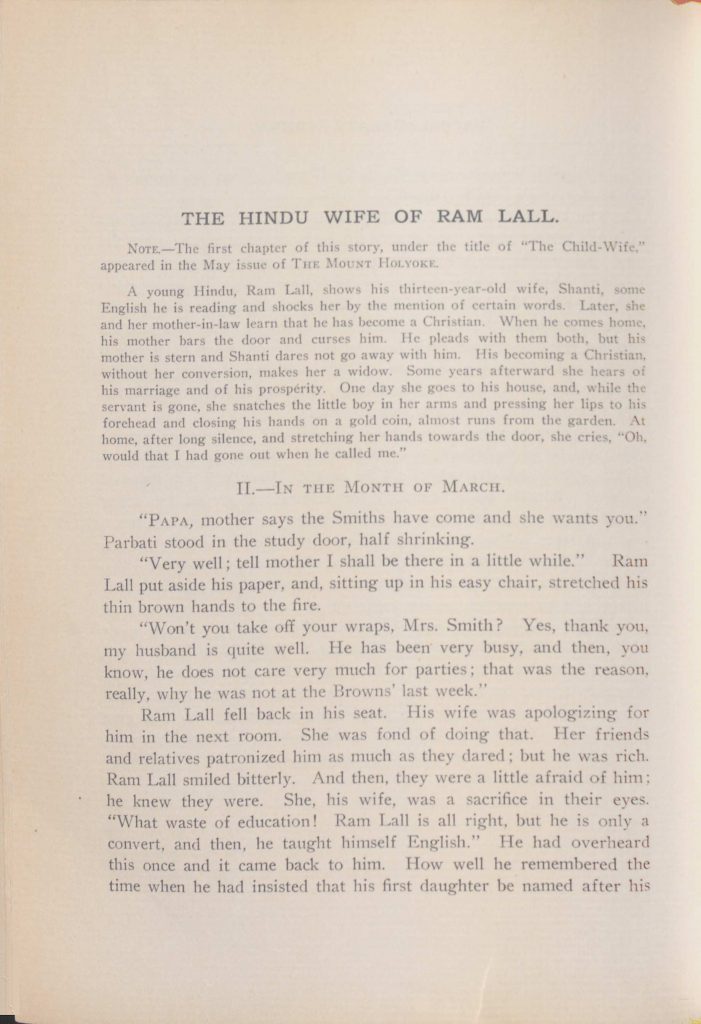Dora Mohinie Maya Das was the first Indian student to attend Mount Holyoke College. She enrolled in 1906 and majored in English. She was a member of the Dramatic Club, and had performed in plays like The Merchant of Venice. She wrote and played a leading role in the production of several plays including The Hindu Wife of Ram Lall. Das was very active in the Mount Holyoke Y.W.C.A. and continued this work when she returned to India. She was elected the first president of the Mount Holyoke Association in India when it was established in 1918—the only Indian among its 29 members, the rest being American. She served as the associate general secretary of the Y.W.C.A. for Burma and Ceylon from 1920 to 1923. She also worked as a teacher and later became the principal of Kinnaird College for Women in Lahore (now Pakistan).

“India is changing, yes, and just because it is in the process of change there are many aspects from which to view it. There are many customs, many habits, many ideas which must be leavened before India can rise to her full height. The caste system, which was useful as a system of guilds, has had its day, and there is a fairly powerful organization inIndia today, with which I have come into contact, known as the ‘Jat Pat Torak Mandal,’ the society for the breaking up of caste. This is only one of a number of similar agencies. Intercaste marriages, marriages between Hindus and Mohammedans and between Hindus and Christians are not infrequent. In my own family a niece and a cousin are married to cultured, educated Hindus. The attitude towards Untouchables, too, is affected by the magic touch of the new spirit. Here, again, in the majority of Villages these unfortunates are not allowed to use the Village well and are decidedly considered “ untouchable”; but the city pumps for common use, the train where the Brahman and Untouchable must sit next to each other, and above all education and the spirit of the twentieth century have slowly but surely begun the ‘destruction of untouchability.’”
-An excerpt from an article by Dora Mohinie Maya Das, class 1909, “India Today,” Mount Holyoke Alumnae Quarterly, August 1931.
